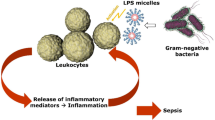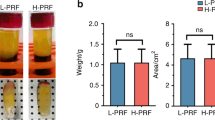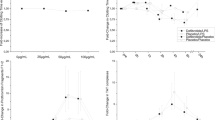Abstract
FIBRINOLYSIS in peptone and anaphylactic shock can be demonstrated either directly, by estimation of flbrinogen in samples taken after the injection of the respective agent, or by adding protamine in order to counteract the effect of the heparin which is discharged into the blood stream. We have shown1 that even the addition of an excess of a powerful preparation of human thrombin is unable to correct the decrease in fibrinogen, which can be estimated by the method of Cullen and Van Slyke2. Since thrombin was able to correct the inhibitory effect of heparin added in amounts such as those appearing in anaphylactic shock, we conclude that a drop in fibrinogen actually occurs during anaphylactic and peptone shock. Moreover, in the case of peptone shock, fibrinolysis can be directly observed, since in several cases the blood clots very quickly and the coagulum redissolves after a few hours. Apparently, Nolf3 was the first to describe this flbrinolytic effect as occurring after peptone injection, in animals in which the liver had been removed or the circulation reduced to the upper part of the body, by ligaturing the thoracic aorta and inferior vena cava, just above the diaphragm. It is now clear that in Nolf's experiments, the removal of the liver prevented the discharge of heparin, since it has been proved that heparin comes from the liver in peptone and anaphylactic shock4.
This is a preview of subscription content, access via your institution
Access options
Subscribe to this journal
Receive 51 print issues and online access
$199.00 per year
only $3.90 per issue
Buy this article
- Purchase on Springer Link
- Instant access to full article PDF
Prices may be subject to local taxes which are calculated during checkout
Similar content being viewed by others
References
Unpublished results.
Cullen and Van Slyke, J. Biol. Chem., 41, 587 (1920).
Nolf, Medicine, 17, 381 (1938).
Waters, Markowitz and Jaques, Science, 87, 582 (1938).
Tagnon, J. Lab. and Clin. Med., 27, 1119 (1942).
Ferguson, J. Lab. and Clin. Med., 28, 1156 (1943).
Author information
Authors and Affiliations
Rights and permissions
About this article
Cite this article
ROCHA E SILVA, M., ANDRADE, S. & TEIXEIRA, R. Fibrinolysis in Peptone and Anaphylactic Shock in the Dog. Nature 157, 801–802 (1946). https://doi.org/10.1038/157801b0
Issue Date:
DOI: https://doi.org/10.1038/157801b0
This article is cited by
-
Enzymatische Vorg�nge bei der Pathogenese allergischer Reaktionen
Klinische Wochenschrift (1965)
-
Allergische Reaktionsmechanismen
Archiv f�r Klinische und Experimentelle Dermatologie (1961)
-
Die theoretischen Grundlagen der Allergie
Archiv für Ohren- Nasen- und Kehlkopfheilkunde (1960)
-
Untersuchungen zum postoperativen Verhalten der Aminos�uren
Langenbecks Archiv f�r Klinische Chirurgie (1959)
-
Zur Frage des Wirkungsmechanismus eines Histaminfreisetzers (Substanz 48/80)
Zeitschrift für Die Gesamte Experimentelle Medizin (1959)
Comments
By submitting a comment you agree to abide by our Terms and Community Guidelines. If you find something abusive or that does not comply with our terms or guidelines please flag it as inappropriate.



